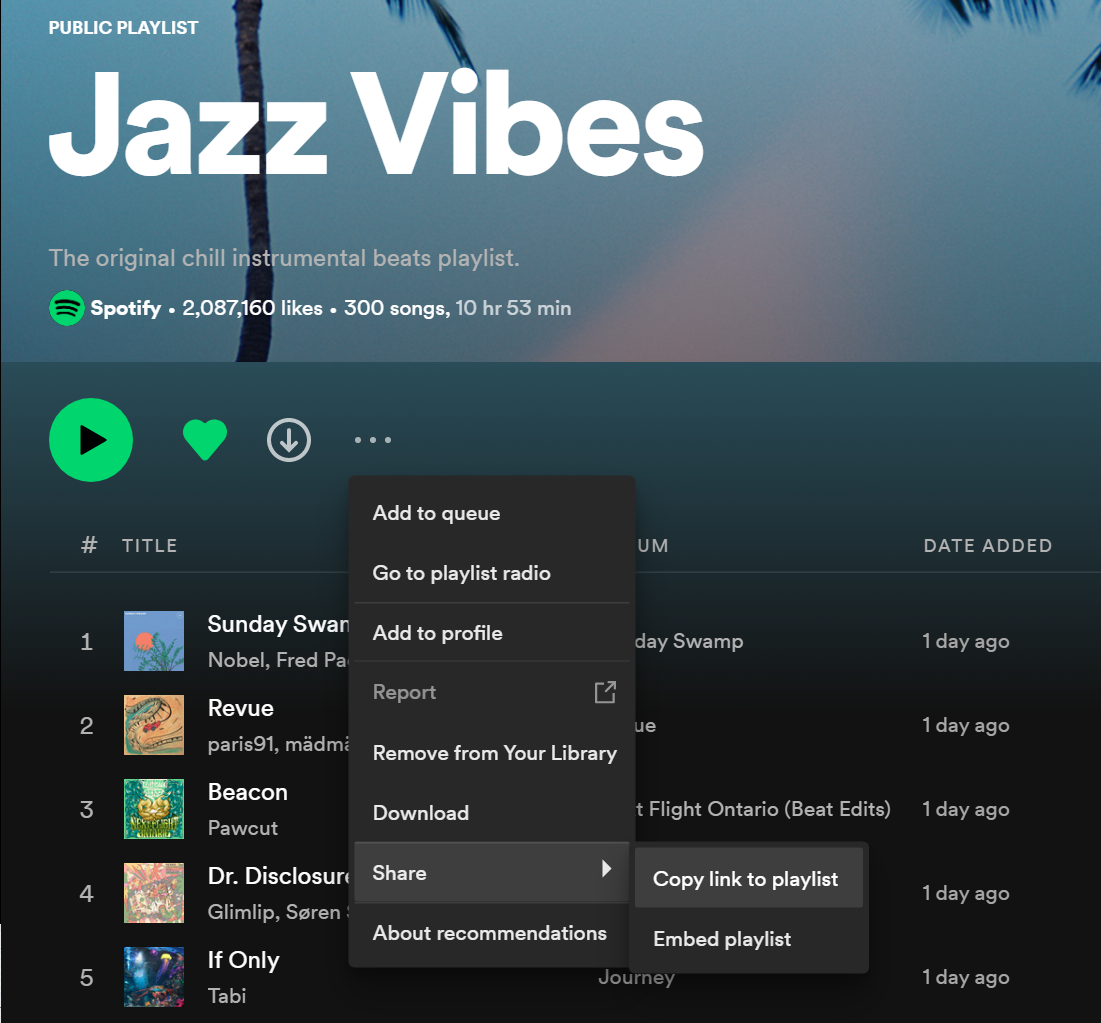You need Python 3.6+. To download songs as MP3, you will need ffmpeg.
- Linux users can get them by installing libav-tools by using apt-get
sudo apt-get install -y libav-tools) or a package manager which comes with your distro - Windows users can download FFMPEG pre-built binaries from here. Extract the file using 7-zip to a foldrer and add the folder to your PATH environment variable
-
Install using pip
pip3 install spotify_dl -
Login to Spotify developer console and click on "Create an App". Fill in details for name and description
-
Make a note of Client ID and Client Secret. These values need to be then set
SPOTIPY_CLIENT_ID,SPOTIPY_CLIENT_SECRETenvironment variables respectively.You can set environment variables as mentioned below:
Linux:
export SPOTIPY_CLIENT_ID=your-spotify-client-id export SPOTIPY_CLIENT_SECRET=your-spotify-client-secretWindows Powershell: $env:SPOTIPY_CLIENT_ID=your-spotify-client-id $env:SPOTIPY_CLIENT_SECRET=your-spotify-client-secret
Windows CMD: set SPOTIPY_CLIENT_ID=your-spotify-client-id set SPOTIPY_CLIENT_SECRET=your-spotify-client-secret
See this question for more info,
-
Run the script using
spotify_dl. spotify_dl accepts different parameters, for more details runspotify_dl -h.For most users
spotify_dl -l spotify_playlist_link -o download_directoryshould do wherespotify_playlist_linkis a link to Spotify's playlist. You can get it from the 3-dot menu.
spotify_dl also supports downloading multiple playlist, you can pass them like below:
spotify_dl -l spotify_playlist1 spotify_playlist2 -o download_directorydownload_directoryis the location where the songs must be downloaded to. If you give a.then it will download to the current directory.
-
To retrieve download songs as MP3, you will need to install ffmpeg. If you prefer to skip MP3 conversion, pass
-mor--skip_mp3as a parameter when running the script- Linux users can get them by installing libav-tools by using apt-get (
sudo apt-get install -y libav-tools) if you'rte using a Debian/Ubuntu or a package manager which comes with your distro - Windows users can download FFMPEG pre-built binaries from here. Extract the file using 7-zip to a foldrer and add the folder to your PATH environment variable
- Linux users can get them by installing libav-tools by using apt-get (
-
If you prefer to skip MP3 conversion, pass
-mor--skip_mp3as a parameter when running the script -
If you wish to download via proxy, pass
-pflag with the URL of the proxyFor HTTP:
spotify_dl -p "http://username:password@hostname:port" or "http://hostname:port"For SOCKS5
spotify_dl -p "socks5://username:password@hostname:port" or "socks5://hostname:port" -
Spotify-dl can make use of SponsorBlock and skip non-music sections when downloading from YouTube. This is disabled by default and can be enabled using:
spotify_dl -l spotify_playlist_link -s y
Build the Docker image from the Dockerfile, run the following command in the spotify_dl root directory: docker build -t spotify_dl .
Run the Docker image with your client ID and secret:
docker run -d --rm \
-e SPOTIPY_CLIENT_ID=client_id \
-e SPOTIPY_CLIENT_SECRET=client_secret \
-v "download_directory":/download \
spotify_dl \
spotify_dl -l "spotify_playlist_link" -o /downloadReplace download_directory with the path to the directory you want songs in. Set "download_directory" to "$(pwd)" to download to the current directory on Linux.
You can also run the bulk downloading script, make sure to configure it first: bash bulk_docker_download.sh
You can set defaults per user by creating a file at ~/.spotify_dl_settings. Create a key with value for every argument you want a default for. Example:
{
"output": "/home/foo/spotify-dl-output",
"verbose": "true",
"skip_mp3": "t"
}